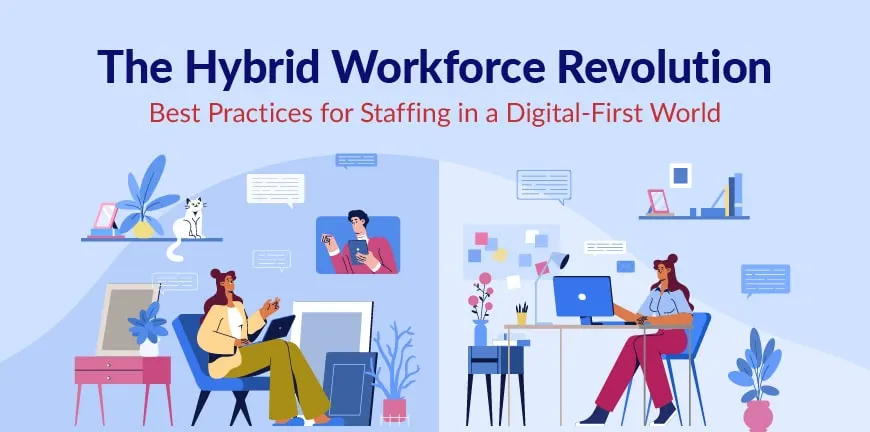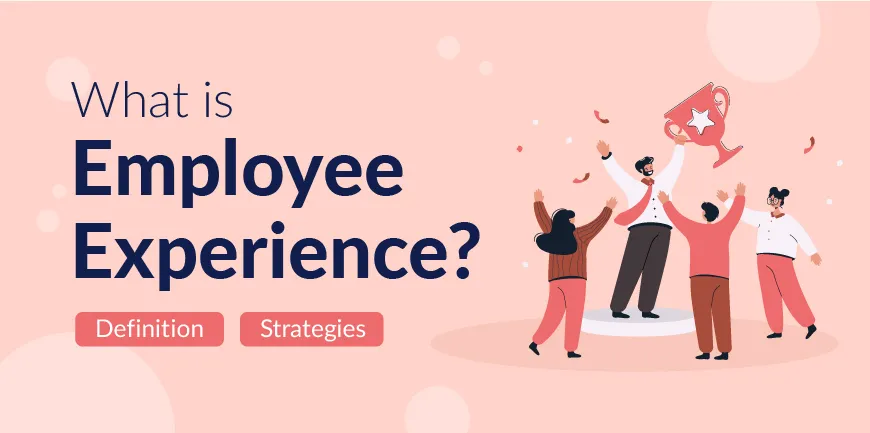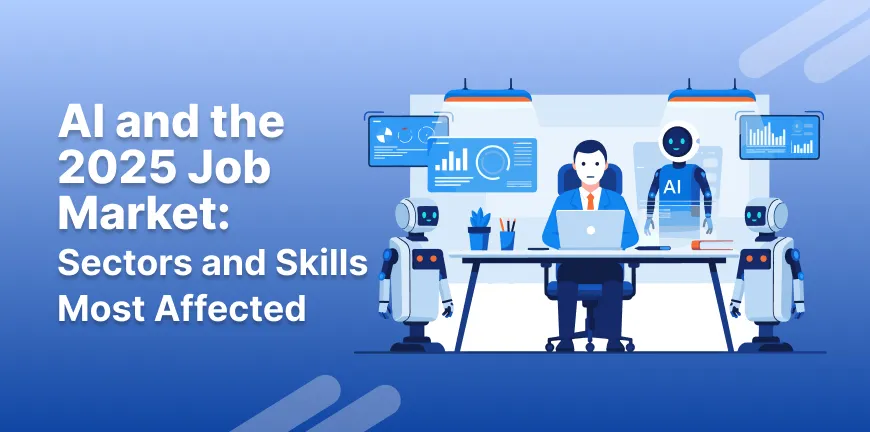
Talent Engagement: What Is It and Why Is It Important
29/07/2025
HR Outsourcing Strategies for Labor Force Disruptions
05/08/2025The influx of technological advancements had already mapped out a fabric for a flexible work landscape. To accelerate the process, the global pandemic made an impactful entry, proving to be an excellent instrument to fight the unprecedented situation head-on. Thus, the pandemic created a pathway for the emergence of the hybrid workforce, a concept that blends remote and onsite manpower in the digitally powered era, revolutionizing the way work is done.
Just like Jeff Weiner, Former CEO, LinkedIn, said, “Technology won’t replace people, but people who use technology will replace those who don’t.”
In this era where digitally advanced corporations and individuals’ rule, it is not just about providing flexible approaches but also planning cautiously for the future. Business leaders and HR specialists must think beyond recruiting for vacant positions and rehash plans to get work done effectively.
Power of a Hybrid Workforce
Hybrid workforce models are no longer experiments that were conducted during the pandemic; it has emerged as a robust, futuristic model that brings together best-in-class talent from all spheres and locations, offering flexibility while opening avenues for opportunities to collaborate.
Businesses are discovering innovative ideas and achieving unmatched productivity as they adopt this model with appropriate digital tools, also giving them the scope to dive into a huge global talent bank and create resilient and adjusting teams to thrive in the modern job arcade.
As Satya Nadella, CEO of Microsoft, states: “The future of work is about flexibility. Employees want it, and organizations need to embrace it to stay competitive.”.
Why the Hybrid Model is Effective?
1. Talent Transcending Borders
Today, companies have no geographical limitations, and they can tap into talent from across the globe, acquiring diverse professionals and can also access specialized skills. All expertise is not available locally and virtual hiring enables businesses to get a hold of specialized skills in niche areas that might be scarce in a local setting.
2. Increased Productivity and Engagement
The productivity level enhances as teams are dispersed across various time zones and are working around the clock.
Employees who work independently and have the authority over the way they work and where they work often display a heightened level of satisfaction, along with their performance levels being accentuated.
The employees tend to stick with companies long-term as they get the drive to keep working efficiently.
3. Cost Optimization
Hybrid models are advantageous for companies as they can help them save expenses that would be spent on office spaces, extra amenities.
It is also cost-effective for organizations as they can now hire individuals from locations with a relatively lower cost of living and cut down on their salary arrangements, keeping quality intact.
4. Business Continuity and Resilience
A workforce that spans countries can tackle turmoil better on a local level . The work continuity does not get hampered, halting productivity.
Businesses that have professionals distributed across locations can serve their global clients consistently, even if certain employees are offline.
The dependency on a single office setup is diminished as several digital tools and communication channels can enable businesses to adapt easily to changing scenarios.
Best Practices for Staffing in a Digital-First World
1. Rethinking Job Roles and Outcomes
In today’s modern hybrid work landscape, job descriptions requiring physical presence, specified office timings, or supervised work plans are now obsolete.
The reality of the new era is different, and now demand has shifted to empowering employees to manage their work and schedules.
The work dynamics have become performance and outcome based. Organizations are allowing employees to work non-synchronously, provided it is aligned with the goals.
2. Invest in Modern Recruitment Technologies
In a smart, global, and hybrid work arena, gone are the days when old recruitment methods were necessary.
Today’s complex and pacy world has other plans, and business and HR leaders can utilize cutting-edge technology anytime, anywhere.
To stay dynamic and ahead of competitors, businesses must capitalize on AI-backed staffing systems, Applicant Tracking Systems (ATS), and skill assessment applications to transform and simplify the recruitment process.
3. Nurture a Tech-Forward Work Culture
The transition from traditional work models to a hybrid manpower model is not just about the change in location or flexibility; it is also about how individuals can work collaboratively, considering the distance factor.
In this digital era, the physical proximity factor can quickly turn into detachment if the working pattern is not rethought.
To make a hybrid workforce successful, organizations must implement methods and create a new tradition where the right digital tools and channels are used to foster communication and association.
Businesses must define specific guidelines and set standards for the workers so that they can handle tasks and updates catering to the demands or expectations of their managers or coworkers and interact with them instantly.
4. Fostering Belonging and Constructing Inclusion
A hybrid work setup often brings with it a sense of dissociation for workers, as they might not feel included.
Businesses must ensure that the integration of remote workers in a team is smooth and effortless, and that they can collaborate efficiently with the existing workers.
Inclusive methods are the backbone of organizations, and they must accelerate them to create an environment that is equal, free of partiality, and full of robust connections among workers who feel valued.
There must be room for equal scopes and information access offered by companies. They must craft mental health awareness programs and offer support to help workers manage stress, isolation, or frustration.
5. Implement Dynamic Workforce Strategies
In today’s fast-evolving business landscape, organizational structures created around full-time job roles and stringent workforce systems are no longer viable.
To stay on top, organizations must consider adopting adjustable and modern approaches that drive prompt decisions, employment based on talent, and continuous reform.
This marks the entry of temporary workers, freelancers, and specialised labour, comprising a crucial part of the hybrid work habitat.
6. Comply With Legal Benchmarks and Security Protocols
We are witnessing a phase where businesses are expanding their manpower across borders as they accept and adopt the hybrid model.
It is a more complex scenario now as compliance plays a vital role. It is beyond complying with local rules and laws as companies now must be updated with global standards and tax regulations.
Companies must change their approach and take robust measures to adhere to laws and rules effectively, preventing any risk.
Hybrid Workforce Preferences: 2025
| Category | Key Insight |
| Employee Preference | 60–70% Favor hybrid or remote roles |
| Employer Adoption | 64% operate hybrid; 82% planning expansions |
| Productivity | 84–90% report similar or improved productivity |
| Well-being | 99% say hybrid helps mental health; burnout is lowest in hybrid |
| RTO Resistance | Rising pushback—many will leave if full in-office is required. |
The Role of Recruitment Agencies in a Hybrid Laden Future
Recruitment agencies have transformed beyond just recruiting professionals. They are now partners who help shape the future of work and build frameworks for future prepared manpower. This is how they are helping:
- Find AI-powered Talent
- Offer employer branding assistance
- Manage compliance across locations
- They facilitate people analytics and calculate future predictions
- Support organizations in accurately designing, deploying, and adjusting hybrid teams.
Success Stories:
- Adobe has adopted the hybrid approach where employees have the flexibility to work from home or the office, depending on the individual, team, or business.
- Gallup found that of those hybrid workers required to work on-site for a certain period each week, 28% are given specific on-site days they are required to work, while 4% are encouraged to work specific on-site days.
- Airbnb gives most of its employee’s full freedom and flexibility to work from home or the office anywhere in the world.
Welcoming the Hybrid Revolution
We are living in a world that is constantly evolving, and upheavals are inevitable. The concept of a hybrid working model is not a trend or a sudden remedy, it is the future of our working methods.
It depends on how well organizations and recruiters embrace the revolution with open arms by integrating the correct technologies, implementing smart work plans, and designing a people-focused structure to emancipate work environments.




